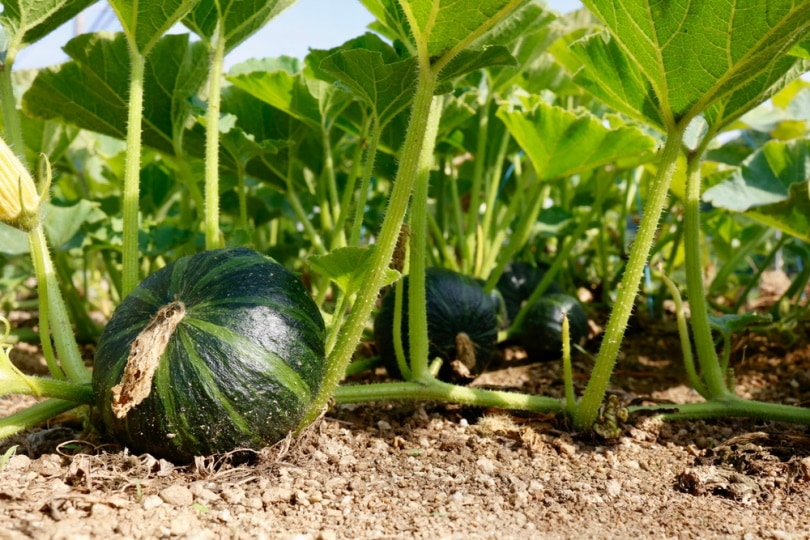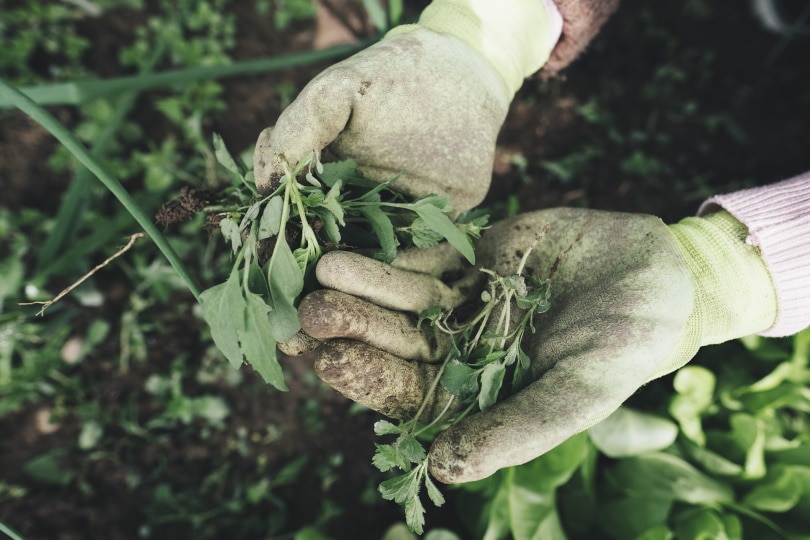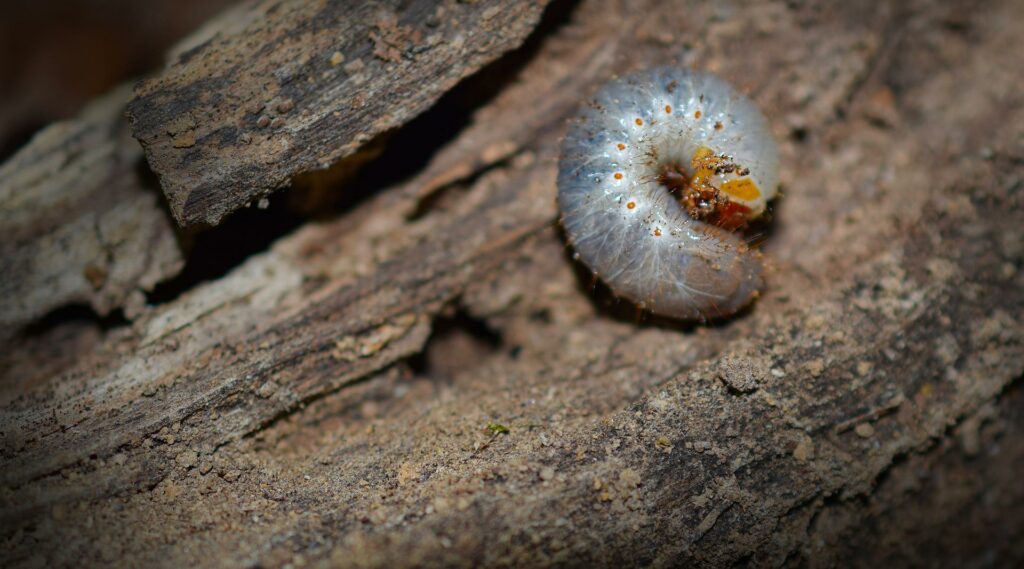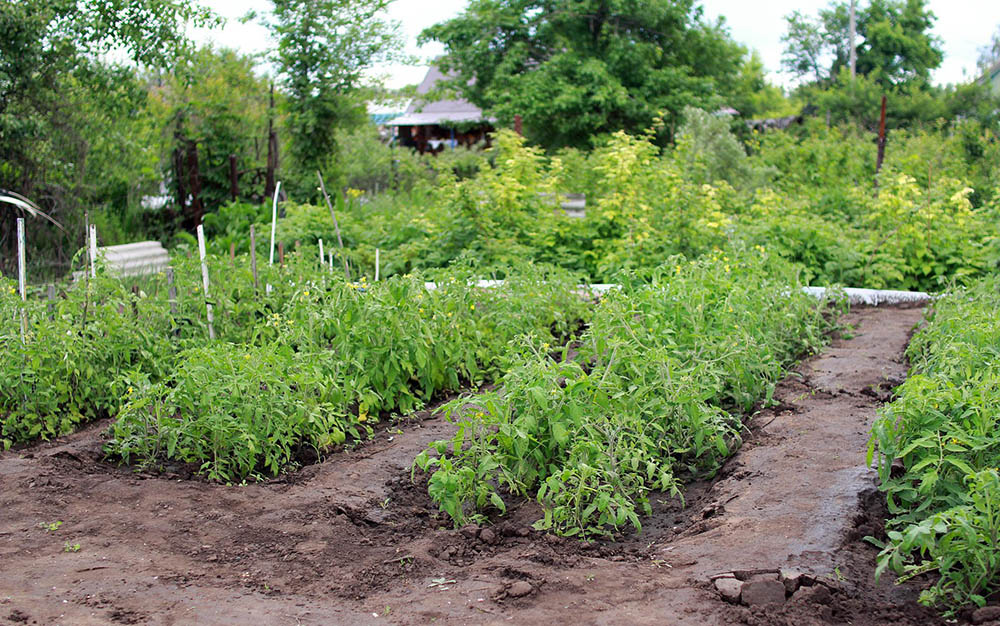How to Get Rid of Grubs in Vegetable Gardens: 5 Methods With Pros & Cons
-
Ashley Bates
- Last updated:

When you’re a gardener, you’re up against nature itself. You have to take exquisite care of your plants to keep them from being prematurely eaten, damaged, or rooted. Grubs are a natural part of any soil system, and gardens are excellent, nutrient-rich spots that attract beetles laying these eggs.
Grubs are usually completely manageable without chemicals. In fact, we have five ways you can safely eliminate grubs without any chemical compound whatsoever. Let’s dig in.

The 5 Methods to Getting Rid of Grubs in Vegetable Gardens
1. Neem Oil
| Form | Liquid |
| Availability | In-store, online |
| Safety | Safe, non-chemical |
Neem oil is a natural and safe pesticide that is naturally occurring. This particular pesticide prevents Japanese beetles and lawn grubs. It infiltrates their feeding, growing, and breeding grounds to eliminate the cycle.
Using neem oil is relatively easy. You simply mix neem oil with water and apply it to your soil. Depending on the neem oil you purchase, there might be slightly different instructions, so make sure that you read any labels to apply correctly.
- Natural
- Readily available
- Effective
- Only targets two species of grub
2. Diatomaceous Earth
| Form | Powder |
| Availability | In-store, online |
| Safety | Mask advised during application otherwise, non-toxic |
Diatomaceous earth is a naturally occurring soft sedimentary rock in nature. This substance is often broken down into a fine white powder, and it has an undeniable list of uses around farms, gardens, and households.
Diatomaceous earth pierces the wax coating on the grub, drying them out and eventually killing them from dehydration. It also gets rid of other pesky insects in the soil and can be very beneficial to have around for many other uses.
- Readily available and versatile use
- Easy to apply
- Safe to plants, pets, and people
- Might kill useful bugs
3. Hand-picking

| Form | NA |
| Availability | NA |
| Safety | Safe |
Since most grubs don’t like burrowing too far down into the soil, you can usually pick them out by hand. It might be a little time-consuming, but if you’re down there digging out weeds, you might as well pick the grubs as you see them.
Seeing a grub here and there is perfectly normal but still not favorable for your garden. Before they become a problem, you may be able to remove them here and there as you weed from the early months on. It likely won’t turn into a full-blown issue.
- Free method
- Can get ahead of the issue
- No chemicals needed
- Requires early action to be successful
4. Nematodes
| Form | Live organisms |
| Availability | In store, online |
| Safety | Safe |
A prevalent method of getting rid of grubs naturally is to release parasitic nematodes onto your lawn. These are microscopic organisms that are completely harmless to all life except grubs. When you buy them, they are alive, so it’s essential to use them right after purchase.
You can find nematodes available both online and in supply stores. They act as tiny roundworms, entering the body and killing its host in roughly three days. They are a very beneficial additive to the soil, enriching the ground by reducing the nuisances.
- Targets grubs specifically
- Ships live
- Harmless
- Effectiveness can vary
5. Milky Spore
| Form | Powder, granules |
| Availability | In-store, online |
| Safe | Wear mask during application, otherwise safe |
A milky spore is a granular substance t that is a soil-dwelling bacterium. That is excellent for controlling grubs—B. papillae. It is especially effective against Japanese beetles. It will attack the larvae of these Japanese beetles, removing the eggs and larvae for up to 15 years.
To be effective, the grubs have to consume the milky spore. Once they do, the bacteria works from the inside out to kill the grub. The spores work to infect the larvae—preventing further development and ultimately leading to death.
- Readily available
- Effective
- Lasts up to 15 years
- Targets only one grub species

What Are Grubs?
When you hear the word grub, it isn’t a one-size fits all deal. No little creature has this name scientifically and doesn’t cover just one variety of larvae. The term grub describes several beetle species before they reach adulthood stages. When these worms are still in the larva state before development, they live in rich soils with abundant food sources.

How Do Grubs Reproduce?
They end up developing as dormant eggs, flourishing in the spring. If they are left to their own devices, they will morph into adult form, mate, and hatch more larva the following season. Surprisingly, it can take up to a year before some grubs fully develop. Once they reach adulthood, they will lay their own eggs, sharing their species’ survival.
What Do Grubs Do to Garden Plants?
Unfortunately, grubs can be detrimental to gardens because they will eat the roots of your plants. Typically, they don’t burrow very deeply and are generally easy to find. If you have a grub problem, you might notice it when you are manually weeding your garden. However, we also want to point out that some grubs do burrow deeper depending on the actual species.

Are Grubs Beneficial in Any Way?
Grubs don’t benefit your plants because they use them as a food source. Roots are very tender and easy for grubs to eat, requiring this nutrient to flourish into their adult forms. So, unfortunately, there are not a lot of benefits that grubs do for your plants specifically. However, they serve as a food source for birds and other wildlife.
In fact, you might even realize you have a grub problem simply from the amount of wildlife that keeps coming into your garden. Grubs are a significant food source for birds, raccoons, skunks, and other native species.
Using Insecticide
We don’t like recommending using insecticides straight away, especially for a grub problem. Often, there are other,r more natural and holistic ways that you can manage the situation at home.
Once you introduce insecticides to your plants and soils, they can kill more beneficial insect life and even be a problem for household pets and other animals.
So just know that natural methods are effective and safer than using chemicals. If you have a nasty grub infestation along with other pests, you might not have a choice, but we recommend reading labels to ensure the safety of those around your home.

Conclusion
So, now you have a basic understanding of how to get rid of grubs in your garden. You can use plenty of natural methods to eradicate the problem for you. Typically, the infestation won’t be unmanageable. But if you must use a chemical pesticide, research to ensure the safety of your family members, humans, and furry creatures alike.
- Related Read: How to Get Rid of Hammerhead Worms (6 Expert Tips)
Featured Image Credit: umaruchan4678, Shutterstock
Contents